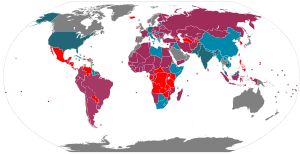Electoral Systems In Brief
May 29, 2019 • 6 views
After this gladiatorial election mania we have successfully swarmed into 17th Loksabha. It’s indubious that these elections were conducted by Election commission of India in 7 phases and in which BJP acclaimed a landslide victory. Further, onus is on the election commission, an autonomous body, to conduct elections in all states and union territories regarded as concerning authority for all the facts and factors like from approving the nominations to counting of votes, even remains vigilant about the violation of code of conduct and ultimately declares the legitimate winner in the process at the end.
What is an electoral system?
It is daedal set of rules and regulations that governs all the elements of the election like when and who can be a candidate? Who can vote? How to mark and count the ballot? How much to be spent in campaigning and all other myriads of factors.
Besides this, out of the various electoral systems the one followed in India is, FPTP (first pass the post system).

First-pass-the-post system
In this system, also known as plurality voting, candidate with highest number of vote is considered as winner where majority is not mandate. Although this system vastly popular in current or former British and American colonies, is second most common electoral system. In our country the system followed is further classified as (SNTV) Single Non Transferable Vote i.e. voter is only able to vote for one candidate in a multimember constituency. While other forms of this system are adopted in different countries, major drawback of this system is that it rewards the strong parties while penalizing the weaker one and therefore a candidate with fewer than half votes gets an opportunity to represent whole constituency.
Majoritarian system
Candidate with majority of votes is elected which are to be conducted in number of rounds if majority is not achieved in first round, which is achieved by adding 2nd preference of the lowest ranked to the totals and repeated until a candidate achieves 50% as majority. This system is followed in Australia and a modified version is adopted in Sri Lanka.

Proportional system
This system is most widely accepted in world and accepted by more than 80 countries including Belgium, Italy, Spain and many othersin different forms and their modifications. The essence of this system is that all votes contribute for formation of government and allocation of seats, as if a particular party is supported by some percentage of voter then that percent of seats will be assigned to that party in parliament and thus allocates a fair presentation to minority and weak parties.
